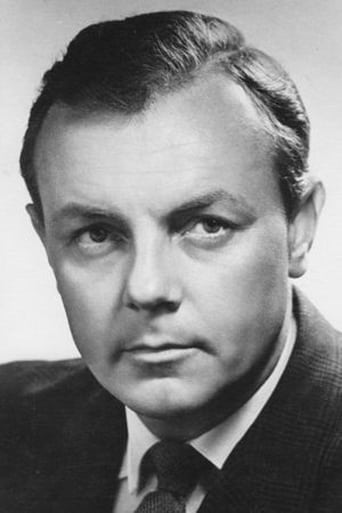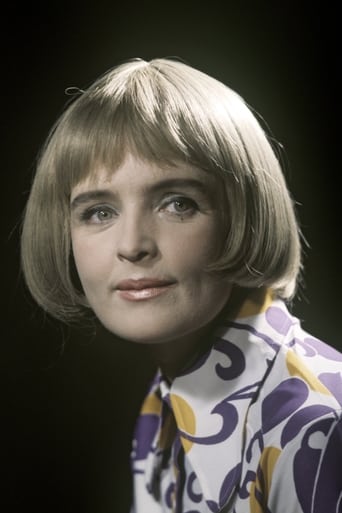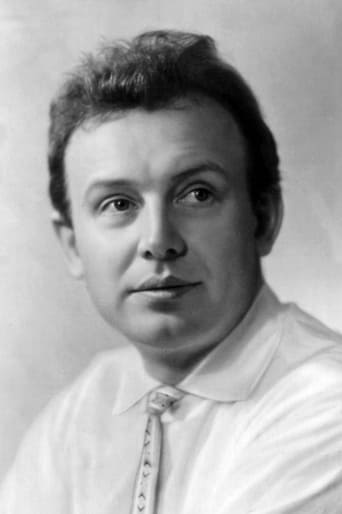BootDigest
Such a frustrating disappointment
Pacionsbo
Absolutely Fantastic
Mandeep Tyson
The acting in this movie is really good.
Zlatica
One of the worst ways to make a cult movie is to set out to make a cult movie.
mishenko323
This film was definitely a pride of the Soviet film industry just a few decades ago. It is still quite an interesting 3-hour movie to watch even today, when masses of viewers are spoiled with crazy special effects. Space wars are shown from the Russian side in this epic film. The director's job is impressive and cinematography too. The film is also interesting because it includes rare black and white documentaries of the first man in space, Yuri Gagarin, and several shots showing rockets taking off from the Baykonur Kosmodrome in Kazakhstan (at that time it was part of the Soviet Union). Famous Russian actors, such as Lavrov and Smoktunovsky did a good job.
Alex
This movie is loosely based on biography of one of the fathers of Soviet cosmonautics - S.P.Korolev. Though definitely the heroic deeds of army of Soviet engineers worth all kind of awards, but this movie leaves me disappointed.This film is outdated today and looks more like propaganda movie, especially at the end - Lenin, communist party, revolutionary song in at the party in Kremlin.Name Bashkirtsev is used here not because S.P.Korolev was a top secret engineer, but because some episodes of the movie have nothing to do with S.P.Korolev. Before WWII he was in prison, in GULAG camp, then in sharashka - a secret research center under supervision of NKVD. Anyone interested in real facts of Korolev would read Wikipedia, and would not not watch this movie.Next is the main idea that is driving Bashkirtsev: flying into space to Mars and to Moon. This movie never says that the main goal of Korolev research center was to create an intercontinental ballistic missile. A space program was just a side project that was used later by Soviet government as another propaganda vehicle. Thsi movie shows as if Bashkirtsev is a lunatic driven by a single idea to launch rockets into space, and military usage of rockets has nothing to do with him or the whole Baikonur launch site. This is again a propaganda cliché.
steveshelokhonov
Biopic about the top-secret Russian rocket designer Sergei Korolev (b. 1906 - d. 1966) was released 6 years after Korolev's death, still the Soviet censorship disallowed his real name. Supporting characters are also based on real people, but their names were top secret in the Soviet Union. Today astronautics.com reveals some of the real names and accurate original cast from the German premiere booklet. Soviet censorship pressured the filmmakers by ordering many scenes to be deleted, so the storyline was altered several times.The film's release was planned on April 12, 1971, the 10th anniversary of Gagarin's flight, but the film was censored. It was buthchered several times until it was seen by the Defence Minister Ustinov and General Secretary Brezhnev, which led to further censorship related to rocket science and politics. What's left of the original film today is a patchwork of scenes about rocket launches, technical discussions mixed with politics, and a fictitious love story. Paranoia of the Cold War is shown in scenes with nervous discussions about the arms race. Filming locations were top secret in the Soviet Union, such as the Baykonur Cosmodrome in Kazakhstan and the Gagarin Space Center near Moscow. The Soviet Red Army guarded the secrets of rocket science technology, so several scenes where actors did a good job with rocket equipment were deleted. Filmmakers expressed regrets that several beautiful scenes on location at Baykonur Cosmodrome were deleted by the Soviet censorship. The original director's cut lost many scenes before it was cleared for public release in April 1972. While the original director's cut ran almost four hours, the released version was reduced down to two and a half hours. Director Khrabrovitsky was under pressure from Soviet leaders who guarded their secrets. Before the reduced version was released to public, I was at the private showing, where director Khrabrovitsky presented the director's cut to the cast and crew: it was a longer version of the film, that is unavailable today. I still remember vividly my impressions from meeting the actors who portrayed historic characters. Filmmakers were half happy: after some rough censorship and delays, the film was finally allowed for public release albeit in a reduced version.The film's time-line spans from the first experimental rockets in the 1920s, to the Katyusha in WWII, to the launch of Sputnik in 1957, and the flight of Gagarin, the first man in space, in 1961. The scenes of the ill-fated Soviet Moon program were censored. But in 1969, American astronauts walked on the Moon, and two more landed there in 1971, leaving the Soviets behind. Then the Soviet leadership released this film, where space race and arms race are shown from the Soviet side. Stalin and the nuclear scientist Kurchatov are portrayed with careful exaggeration, as well as historic figures of Tsiolkovsky and Gagarin. The fictitious parallel story of the main character's wife has no chemistry, while his mother's story is nice. Cinematography with two cameras is impressive, and the music score by Andrei Petrov is memorable. Director Khrabrovitsky works with some of the finest Russian actors, such as Lavrov, Smoktunovsky, Popov, Gorbachyov, Kuznetsova and Gerdt among others. Lavrov's range and nuanced acting is arguably the best in his entire career.Part of the art of film-making is about editing the truth cleverly in order to improve the story. This film was a work of art before it was butchered by the Soviet censorship.
Nikolay Kramer
An epic about Russian rocket scientists and the launches of "Sputnik" and Yuri Gagarin - the first man in space. Soviet secrets are unveiled and many facts are uncovered in this powerful film. The filming locations were top secret in the Soviet Union. Filming was made at the Soviet Space Research Centers near Moscow and at numerous launch sites of the Baikonur Cosmodrome in the deserts of Kazakhtan. Actors are playing the top secret characters, who's real names were not mentioned in the film credits and public media. The leading character and other rocket scientists seem like they were well coached by the real space staff.



